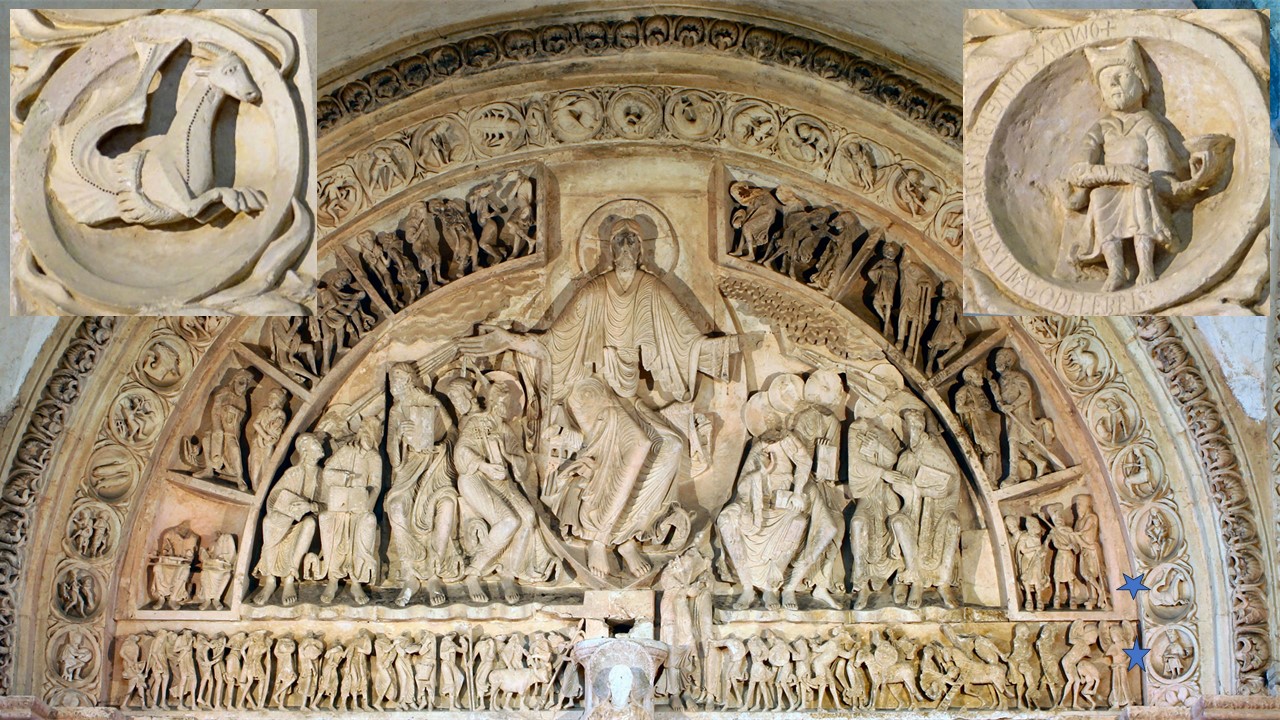
Shortly after its foundation in the 9th century, the Benedictine Abbey of Vézelay acquired the relics of St Mary Magdalene and since then it has been an important place of pilgrimage. St Bernard preached the Second Crusade there in 1146 and Richard the Lion-Hearted and Philip II Augustus met there to leave for the Third Crusade in 1190. With its sculpted capitals and portal, Sainte-Madeleine of Vézelay – a 12th-century monastic church – is a masterpiece of Burgundian Romanesque art and architecture. https://whc.unesco.org/en/list/84/
The Abbey of Vézelay is renowned for its exceptional aesthetic value, characterized by its stunning Romanesque architecture, intricate sculptures, and historical significance. The architectural design is a masterpiece of Romanesque art. The sculptural elements of the abbey are awe-inspiring. Elaborate carvings adorn the capitals of columns, depicting biblical scenes, figures of saints, mythical creatures, and intricate foliage. These sculptures not only showcase the artistic skill of the craftsmen but also serve as visual narratives for pilgrims, conveying religious stories and moral lessons.
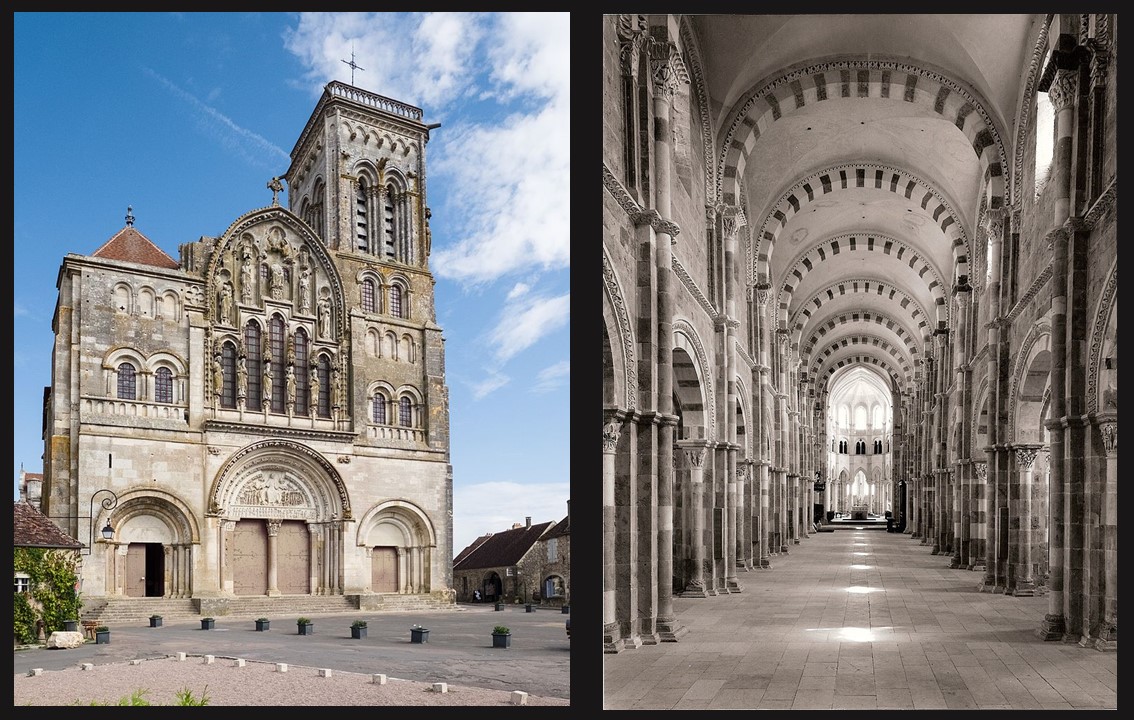
According to the latest interpretation of the tympanum scene the main components of the tympanum (the peoples of the world/the zodiac and months/Christ) function as the mundus/annus/homo of a Neoplatonic macro/microcosm, with the divine/human Christ in the center and the Magdalene at his feet, the purpose of which was to encourage the pilgrim to model himself or herself on Christ or on the Magdalene. https://www.journals.uchicago.edu/doi/10.1086/714579
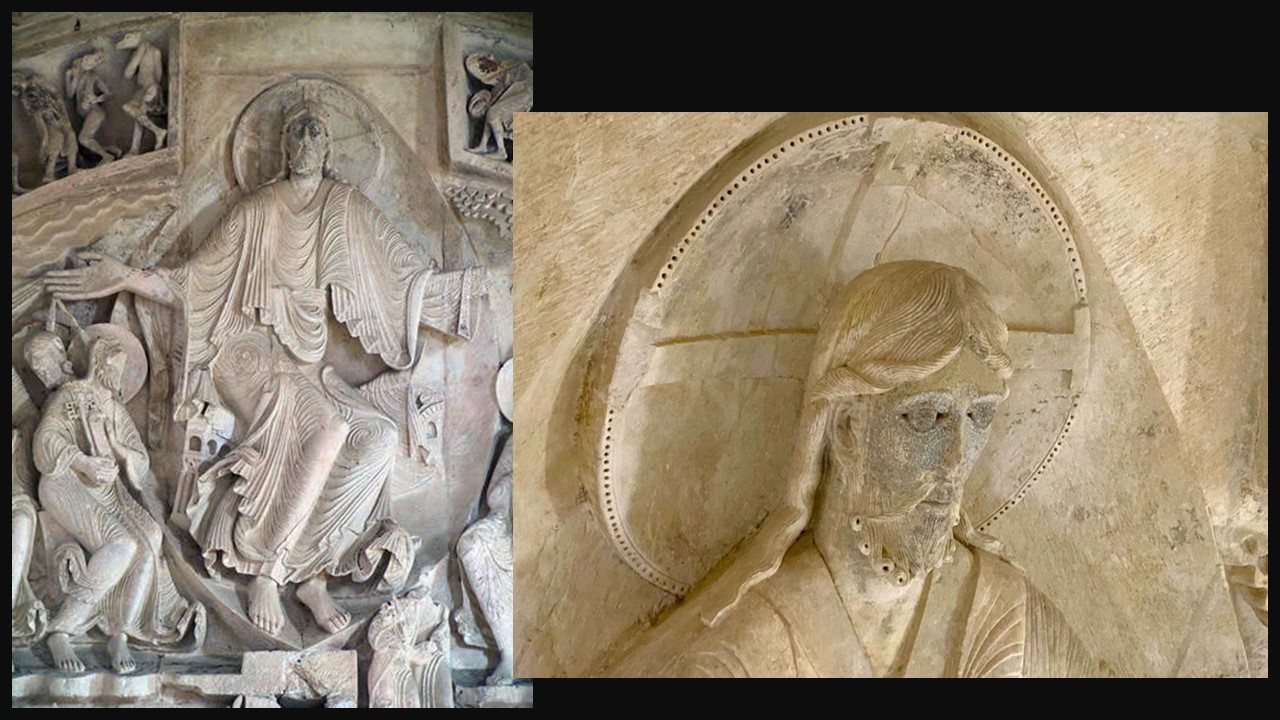
The composition presents an imposing figure of Christ with a halo, seated on a throne, surrounded by a mandorla, in a contorted pose, with His knees twisted to the right. Lines or rays of light come from his hands and go to smaller, highly agitated figures on his right and left sides, around six on each side. Most scholars read these figures as the Apostles because they’re holding books or scrolls. The figure with keys on the right side of Christ is identified as St. Peter.
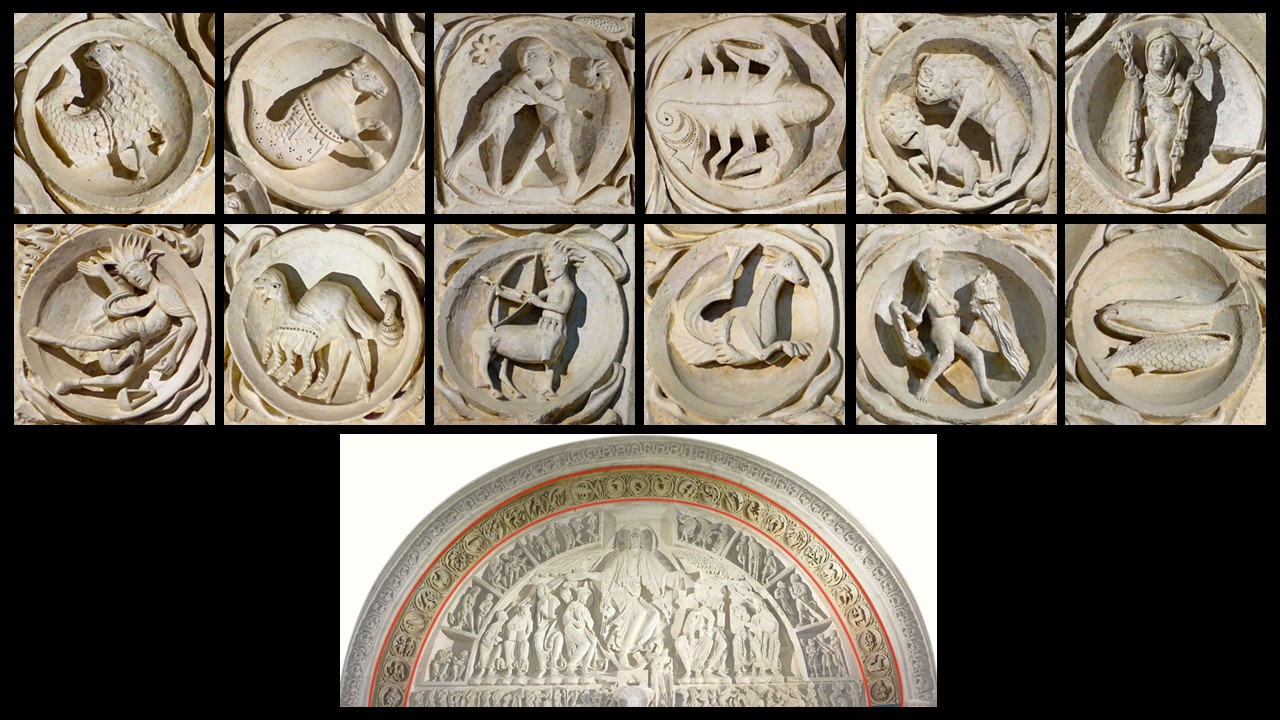
This scene, identified as the Pentecost by most scholars, is surrounded by a partial semicircle of sculpted compartments above and a fully sculpted lintel below depicting various “peoples,” including Cynocephali (people with heads resembling those of dogs), Sciritae (people with, in this case, pig-like noses), Panotii (people with extremely large ears), Pygmies, and Giants, all having their ultimate source in classical geographical and historical literature. It is these peoples, according to Dr. Conrad Rudolph, that have caused most scholars to see the portal as also referring to the Mission to convert all nations. The final part of the Tympanum Composition is an outer archivolt with 29 sculpted roundels of pictures of the 12 Zodiac Signs and 12 different Labours/Activities that happen during each month of the year. https://www.journals.uchicago.edu/doi/10.1086/714579
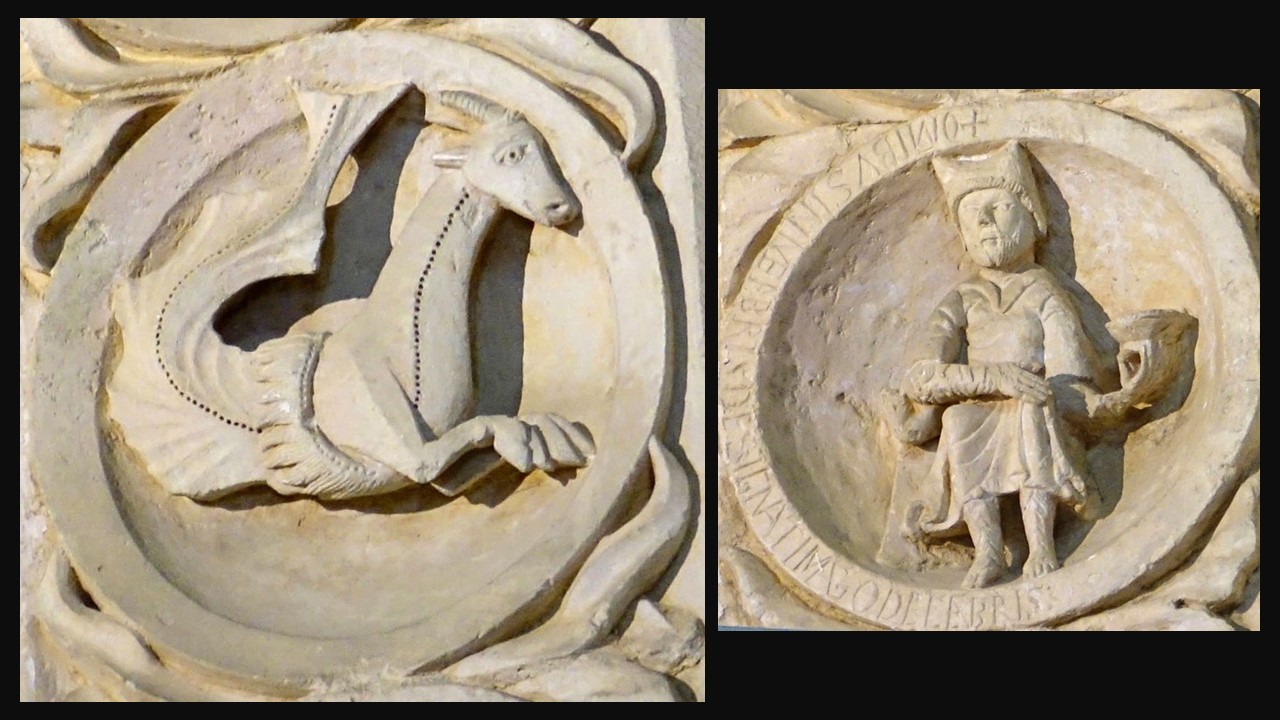
Today, in celebration of the Month of December, I present to you the Vézelay Zodiac Sign of Capricorn. Also, I share the scene of a banquet, where the sharing of bread and wine takes place. The symbolism of the banquet has its roots far back in the early Christian period, and celebrates the ending year and the new year, the eternal return of the cycles of heaven which ensure life on earth.
For the Vézelay pilgrims and viewers of this majestic scene, December is a month filled with energy and anticipation for the upcoming Holiday Season… Days of festivities and feasting are on the horizon. The peasants will soon complete their tasks, and they will be able to enjoy the fruits of their labour, savoring the remnants of their hard work. https://www.cieldujour.net/basilique-de-vezelay/
For a PowerPoint Presentation, please… Check HERE!
Important Articles to read… The Central Tympanum at Vézelay: Its Encyclopedic Meaning and Its Relation to the First Crusade by Adolf Katzenellenbogen, The Art Bulletin, Vol. 26, No. 3 (Sep. 1944), pp. 141-151 (15 pages) https://www.jstor.org/stable/3046949 and Macro/Microcosm at Vézelay: The Narthex Portal and Non-elite Participation in Elite Spirituality by Conrad Rudolph, Speculum, Volume 96, Number 3, July 2021 https://www.journals.uchicago.edu/doi/10.1086/714579